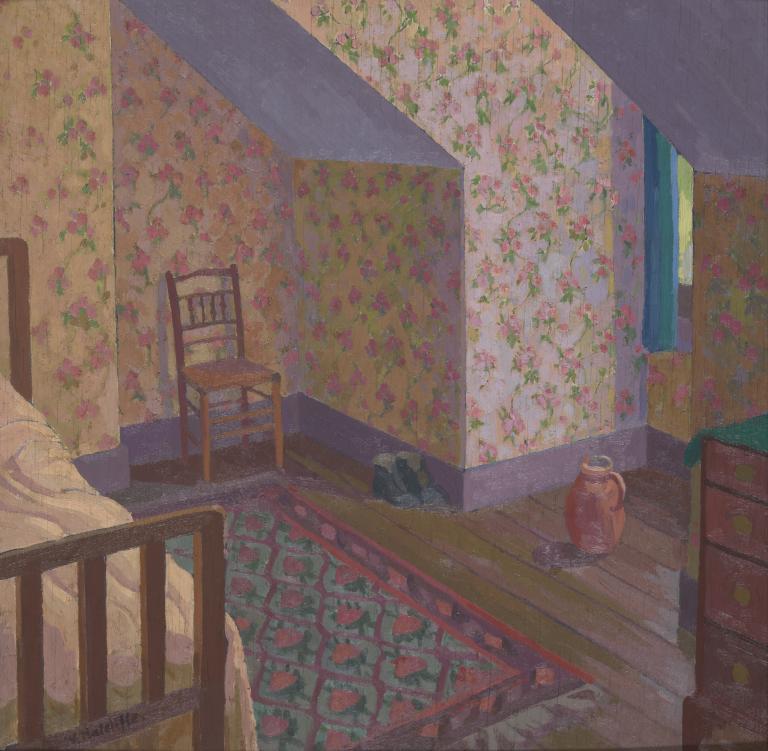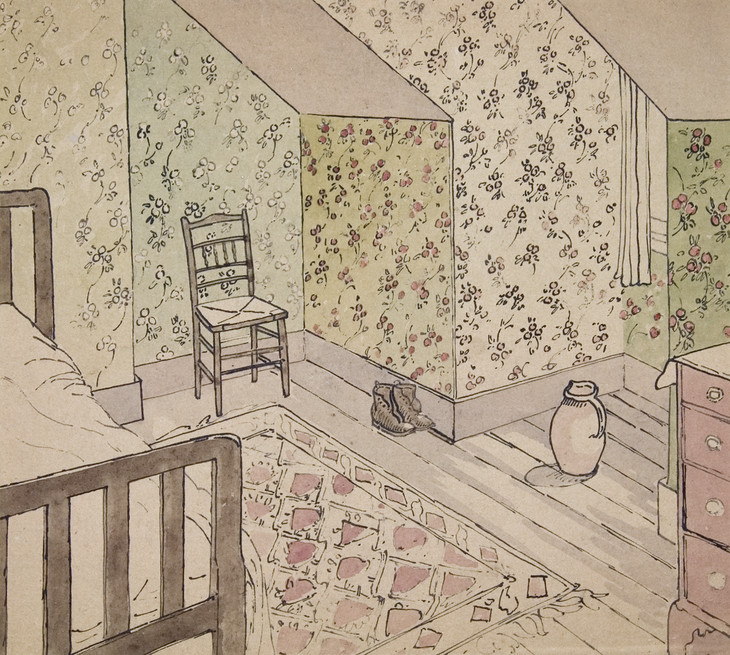The Attic Room is painted on a 3-ply plywood panel. The back of the panel has been covered with a white coating, probably contemporary with the priming on the front surface since there are several historic handwritten labels applied onto the panel. White primer has been applied to the front of the panel and the main compositional elements are marked out in a Prussian blue underdrawing (see also Tate
T02260). The underdrawing and the white primed surface are visible at the borders between compositional features.
The technique is consistent with Ratcliffe’s other works in the Tate collection and reflects Harold Gilman’s teaching. The paint film is built up of several layers of opaque colour. Paint was applied wet-on-dry and is neatly confined to delineated areas. The well-bound paint was stiff enough to retain the texture of the directional brushwork and to define the contours of the form. The underlying colour, which is exposed at the edges of spaces and objects, was also used to define form and spatial boundaries, for example in the alcove. The patterned detail in the wallpaper was applied onto the underlying opaque colour and, when dried, light impasto colour was dabbed and stippled around the floral pattern. Rough impasto has been used to indicate the diffuse reflection of light from the wall; ridges of paint have also been used to indicate the texture of the grain in the wooden floorboards. The palette comprises complementary colours – purple, green and orange – which form a unified coloured surface. A subtle balance is achieved by the incorporation of hints of primary colours: the blue curtain, the yellow shadow on the wall and a touch of red in the pattern of the rug. The painting now retains much of its original saturation and gloss due to the removal of an old discoloured varnish.
Sarah Morgan and Natasha Walker
July 2005
How to cite
Sarah Morgan and Natasha Walker, 'Technique and Condition', July 2005, in Robert Upstone and Ysanne Holt, ‘The Attic Room 1918 by William Ratcliffe’, catalogue entry, January 2011, in Helena Bonett, Ysanne Holt, Jennifer Mundy (eds.), The Camden Town Group in Context, Tate Research Publication, May 2012, https://www.tate.org.uk/art/research-publications/camden-town-group/william-ratcliffe-the-attic-room-r1136014, accessed 30 November 2025.




